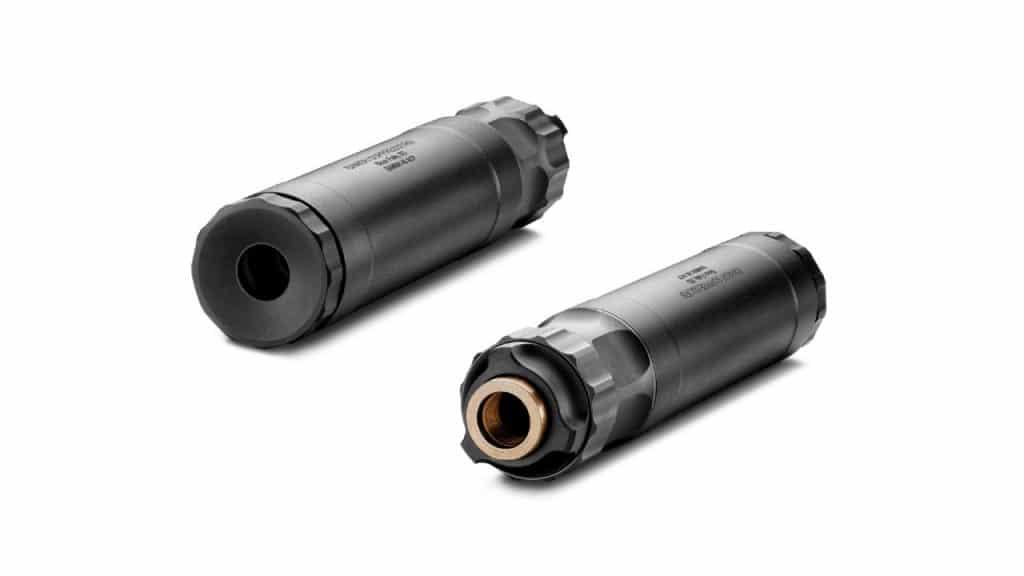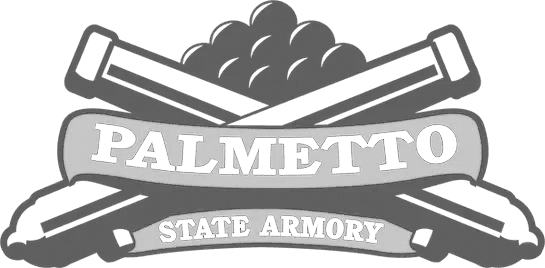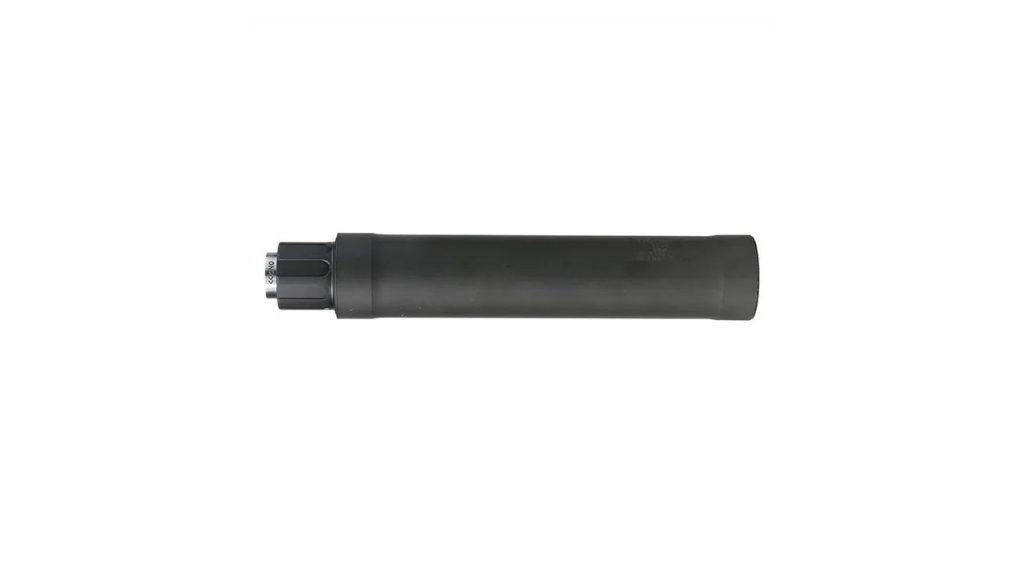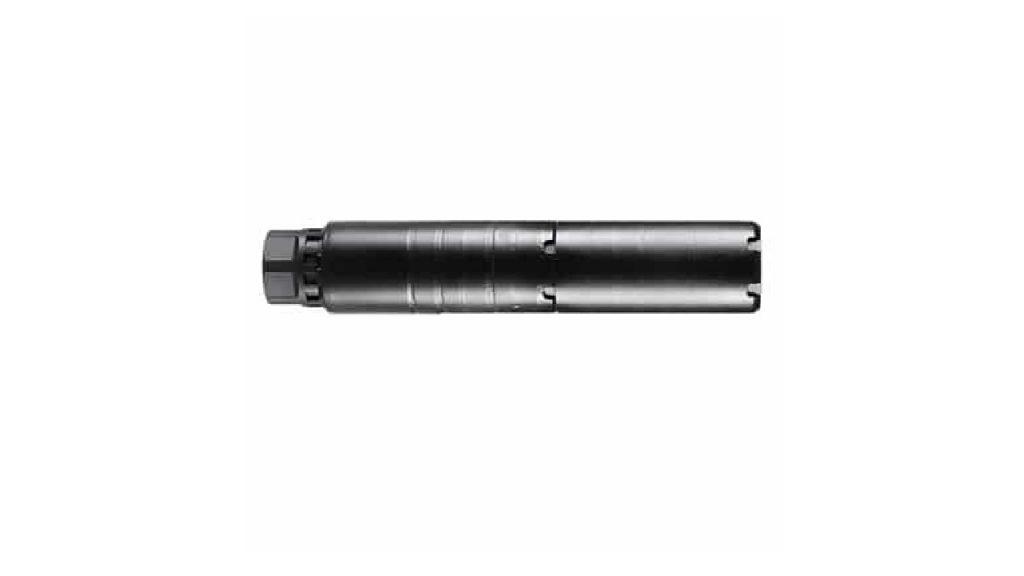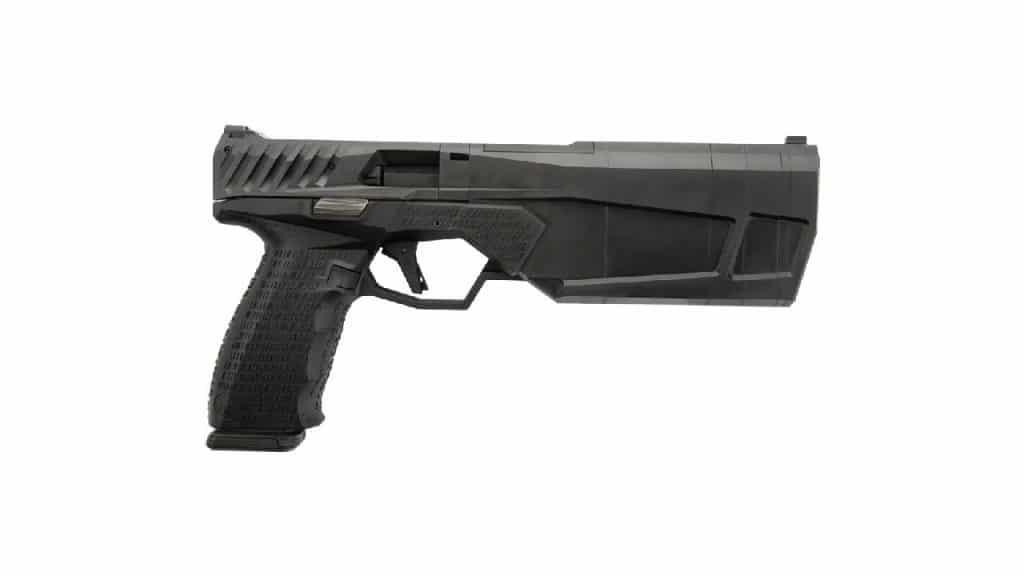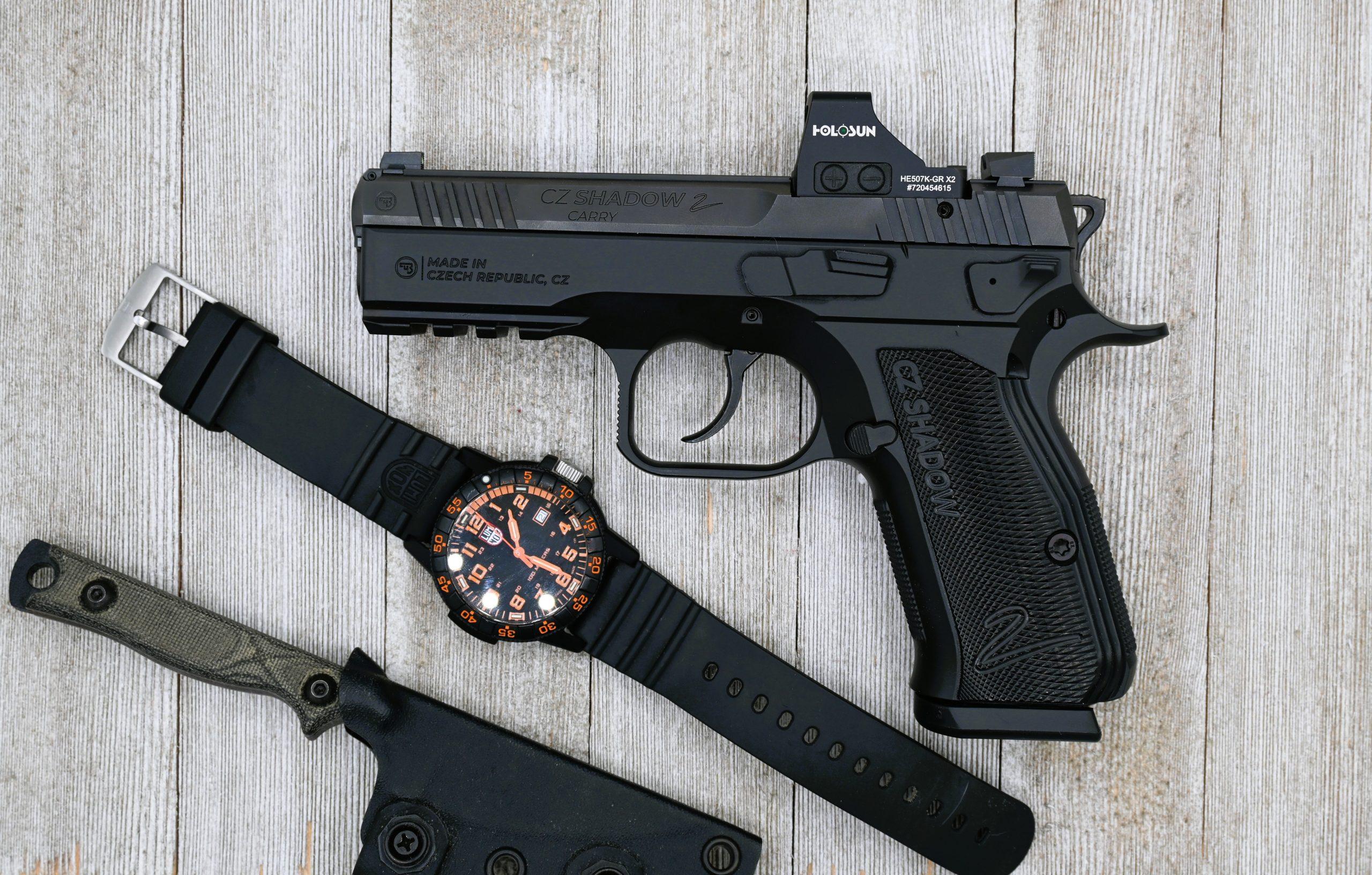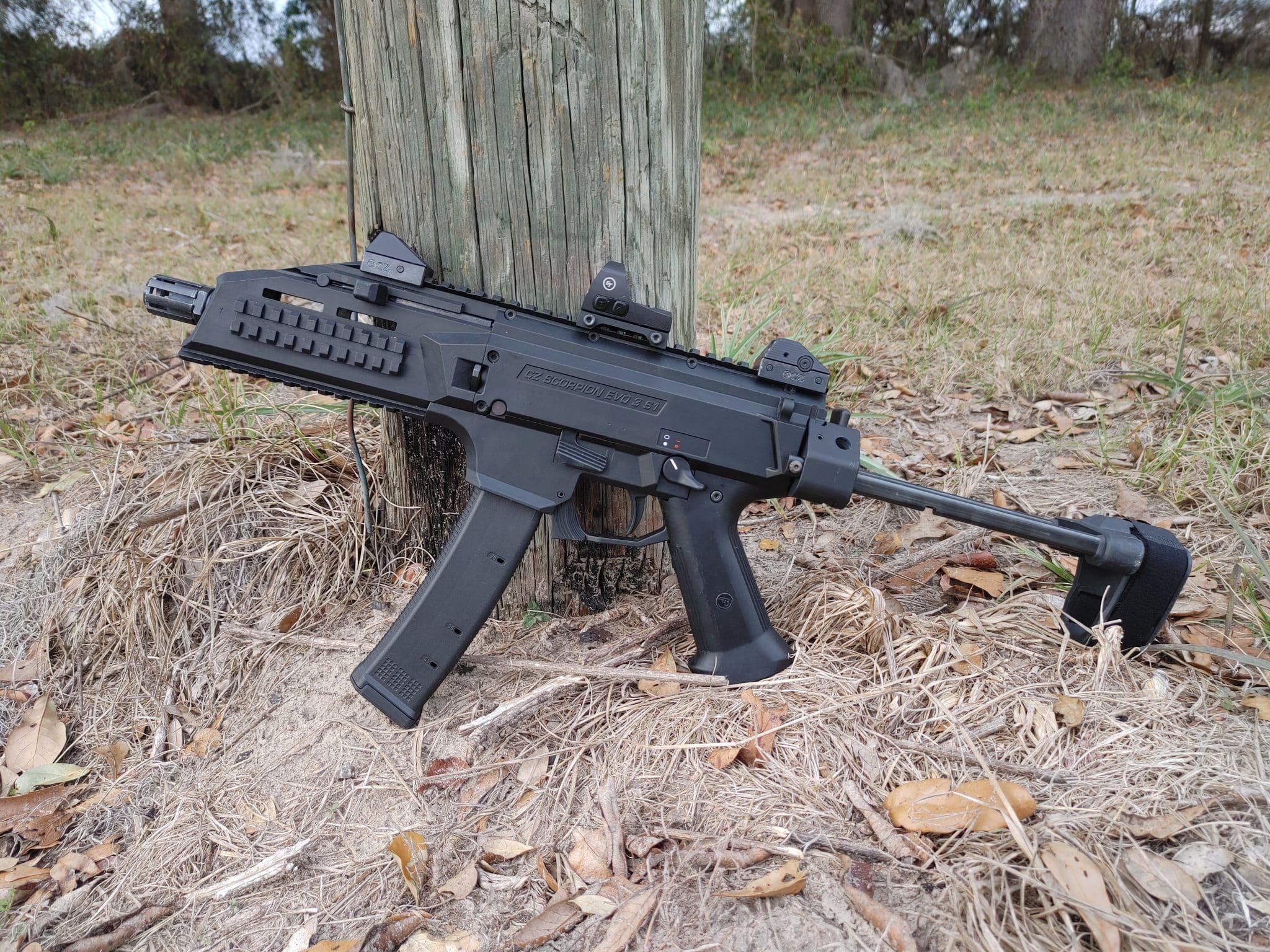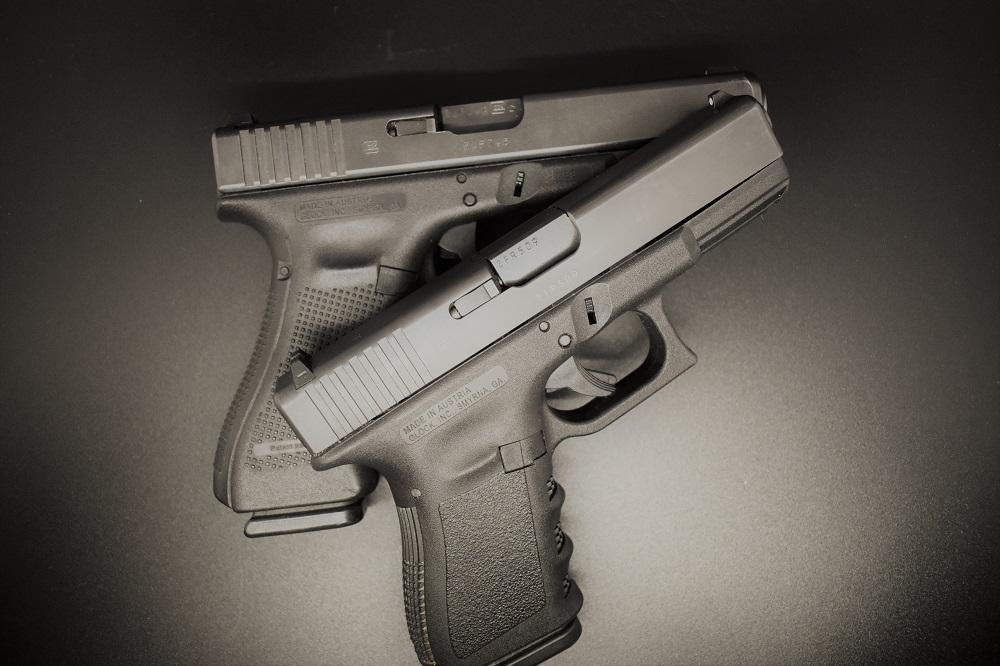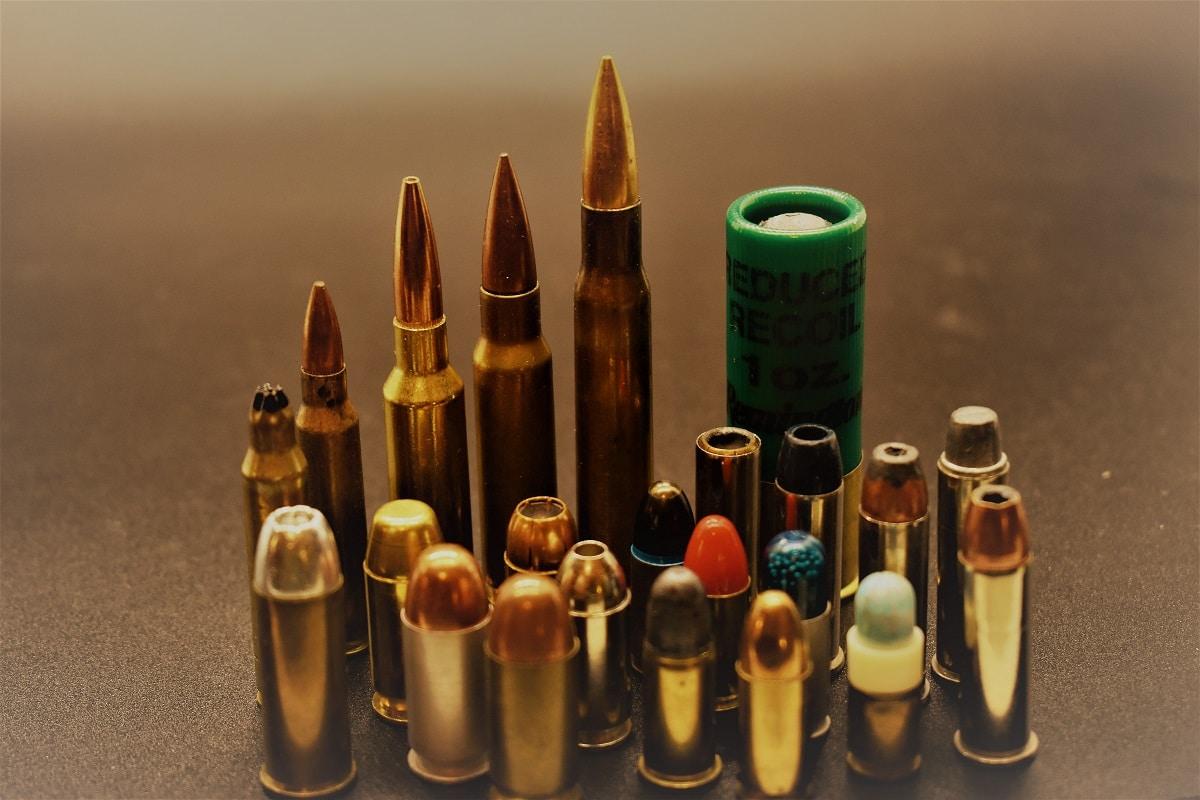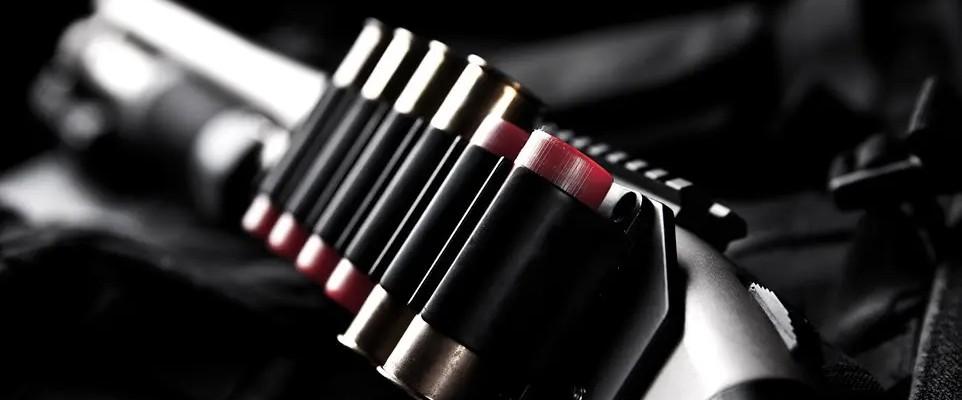The Best 9mm Suppressors: Let’s Get Quiet
Written By
Michael Crites
Licensed Concealed Carry Holder
Reviewed by
Editorial Team
Learn About The Editorial Team
Share:
Products are selected by our editors. We may earn a commission on purchases from a link. How we select gear.
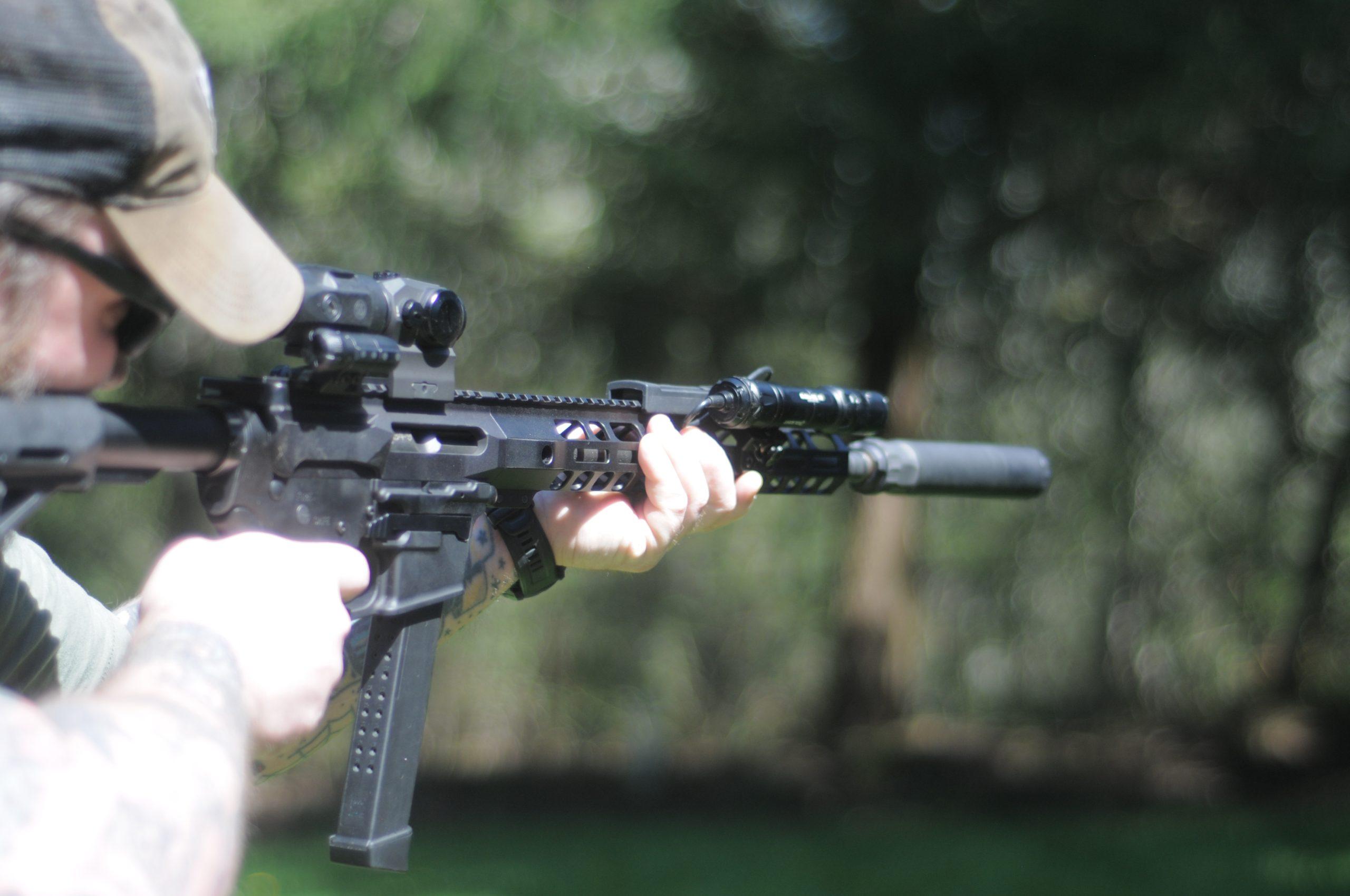
Updated
Jun 2025
When you need to keep things quiet, be it for range etiquette, home defense needs, or tactical applications, suppressors are a must-have accessory. And there’s no better platform to suppress than 9mm firearms.
Given that 9mm pistols are incredibly common these days — serving as everything from everyday carry sidearms to home defense weapons and tactical tools — finding the right suppressor can make all the difference in your shooting experience. Whether you’re running a compact carry gun, a full-size duty pistol, or a pistol-caliber carbine, 9mm suppresses beautifully when paired with the right equipment.
But with dozens of options on the market, choosing the best 9mm suppressor can feel overwhelming. That’s where we come in.
We’ve put the most popular 9mm suppressors through rigorous testing to evaluate their sound reduction, accuracy impact, recoil management, and overall durability. From budget-friendly options to premium multi-caliber models, we’ll help you find the perfect suppressor for your specific needs and budget.
Ready to discover which 9mm suppressors earned our top spots? Let’s dive into our comprehensive testing results and detailed reviews.
In This Article
Understanding 9mm Suppressors: The Basics
Before diving into specific product recommendations, it’s crucial to understand how 9mm suppressors work and why they’re different from their rifle counterparts. This knowledge will help you make a more informed decision when selecting your suppressor.
How Handgun Suppressors Differ from Rifle Suppressors
Unlike rifles with fixed barrels, most semi-automatic pistols use a tilting or moving barrel system to cycle the action. When you add a suppressor to the end of that barrel, the extra weight can interfere with the pistol’s ability to cycle properly — sometimes preventing it from functioning altogether.
Nielsen Devices: The Secret to Reliable Function
To solve this problem, most handgun suppressors use what’s called a Nielsen device, also known as a piston or booster. This clever mechanism increases the rearward energy directed into the firearm’s barrel during firing, counteracting the suppressor’s weight and helping the action unlock properly.

Think of it as a little doorway that ensures your pistol cycles reliably even with a suppressor attached. Without it, many pistols would fail to eject spent casings or feed new rounds.
However, not all pistols need a Nielsen device. Fixed-barrel designs like many pistol-caliber carbines, along with some rotating or sliding barrel systems, can often handle suppressor weight without assistance — especially with lightweight titanium models.
Threading Compatibility: Getting Connected
Most 9mm firearms come with 1/2×28 threads, which is the standard for this caliber. This makes finding compatible suppressors relatively straightforward, as nearly all 9mm suppressors and adapters use this thread pitch.
That said, some imported firearms use different threading like M13.5x1LH, and certain pistol-caliber carbines might use 1/2×36. Always verify your barrel’s thread pitch before purchasing — it should be marked on your thread protector or in your owner’s manual.
Important Performance Factors
9mm suppressors excel because 9mm ammunition operates at relatively low pressures and temperatures compared to rifle cartridges. This means suppressors can be lighter, more compact, and still deliver excellent sound reduction. The combination of moderate velocity and the option to use subsonic ammunition makes 9mm one of the most suppressor-friendly calibers available.
The trade-off between size, weight, and performance becomes especially important with handguns. A massive suppressor might be incredibly quiet, but it defeats the purpose if it makes your pistol unwieldy for defensive use or concealed carry.
Understanding these basics will help you better evaluate the suppressors in our detailed reviews and choose the one that best fits your specific shooting needs.
Suppressor Comparison
Below is my list of the best 9mm suppressors. I list the best choices in terms of value, performance, design, and cost.
Click on the name to head to the product page, read reviews and check prices or skip ahead to the list of suppressors.
| Name | Selection | Price |
|---|---|---|
Best Overall | $949 | |
Budget Option | $550 | |
Best Recoil Reduction | $605 | |
Full-Auto Option | $799 | |
Most Innovative | $1,499 |
How We Picked
Sound Reduction
We use a digital decibel meter to measure the sound reduction provided by each suppressor.
Accuracy
We evaluate the impact of the suppressor on the accuracy of the firearm.
Recoil Reduction
We assess the suppressor’s ability to reduce felt recoil & control.
Durability
We review the suppressor material and components and performance in any high-pressure and high-temperature condition testing.
More on our testing process
9mm Suppressor Reviews
1. Best Overall: Silencer Central
Sound Reduction:
Accuracy:
Recoil Reduction:
Durability:
First up is the Silencer Central Banish 45. It’s definitely pricey, but overall well worth it thanks to its quality design features.
For starters, the silencer uses a tubeless configuration that can deliver fantastic sound suppression without being too heavy or long.
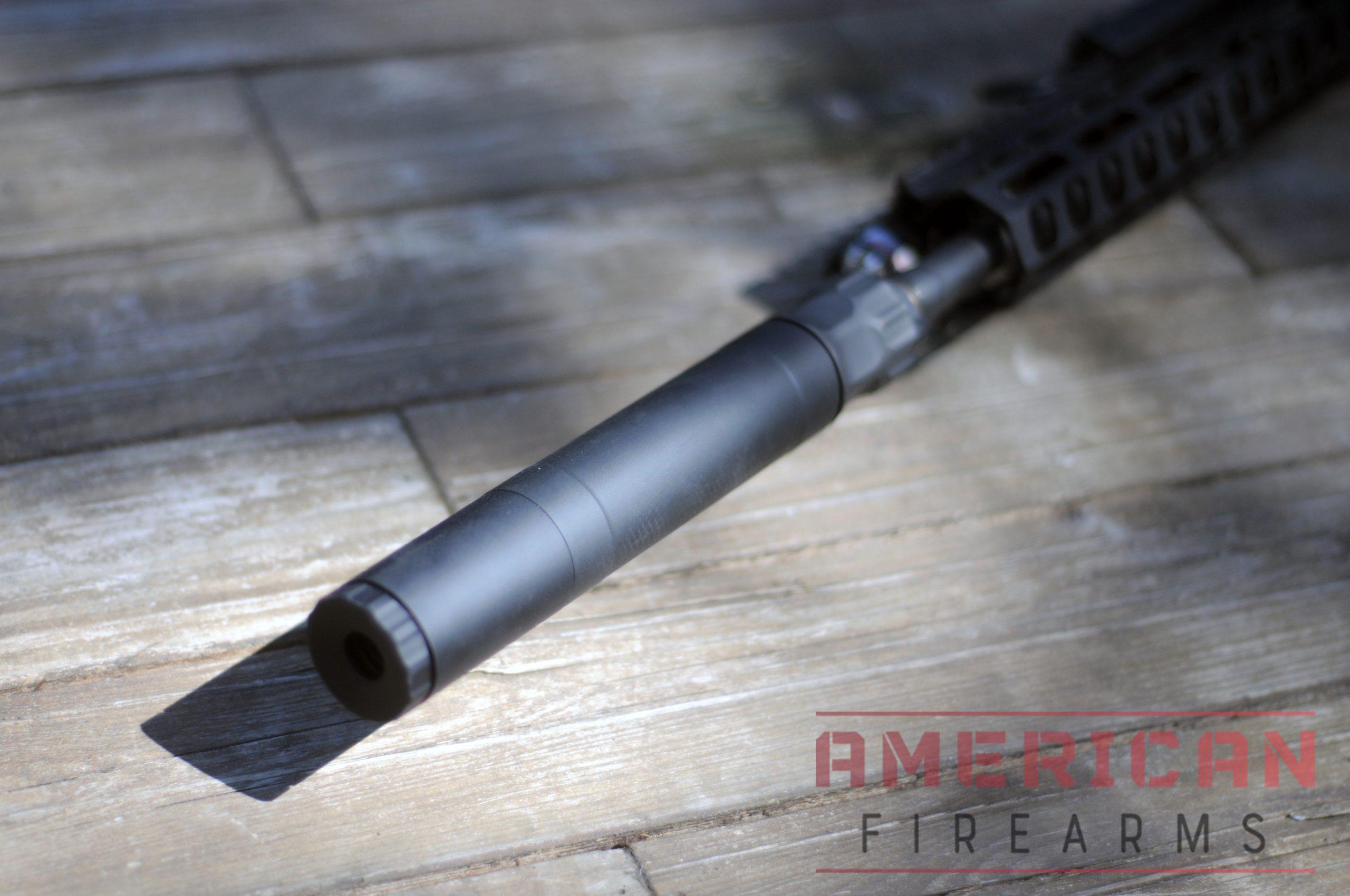
Sound Reduction
The Banish 45 is modular — enabling you to run it in 6.7″ or 8.6” configurations. You just pull out four center baffles and pop the end cap on the shorter eight-baffle configuration. The claimed sound reduction of a 9mm report is 36 dB — dropping a 160 dB report down to a hearing-safe 126 dB or so on average.
In my testing, I consistently measured 110Db on my meter. Granted, this was out in the field and not in a controlled environment, but the report was nonetheless significantly reduced.
Depending on the configuration it tips the scale somewhere between 9.6 and 11 oz, which I validated on my scale, so you’ll be able to use your favorite pistol without things feeling too off.
It is made of corrosion-resistant titanium and aluminum, which helps keep the weight down.
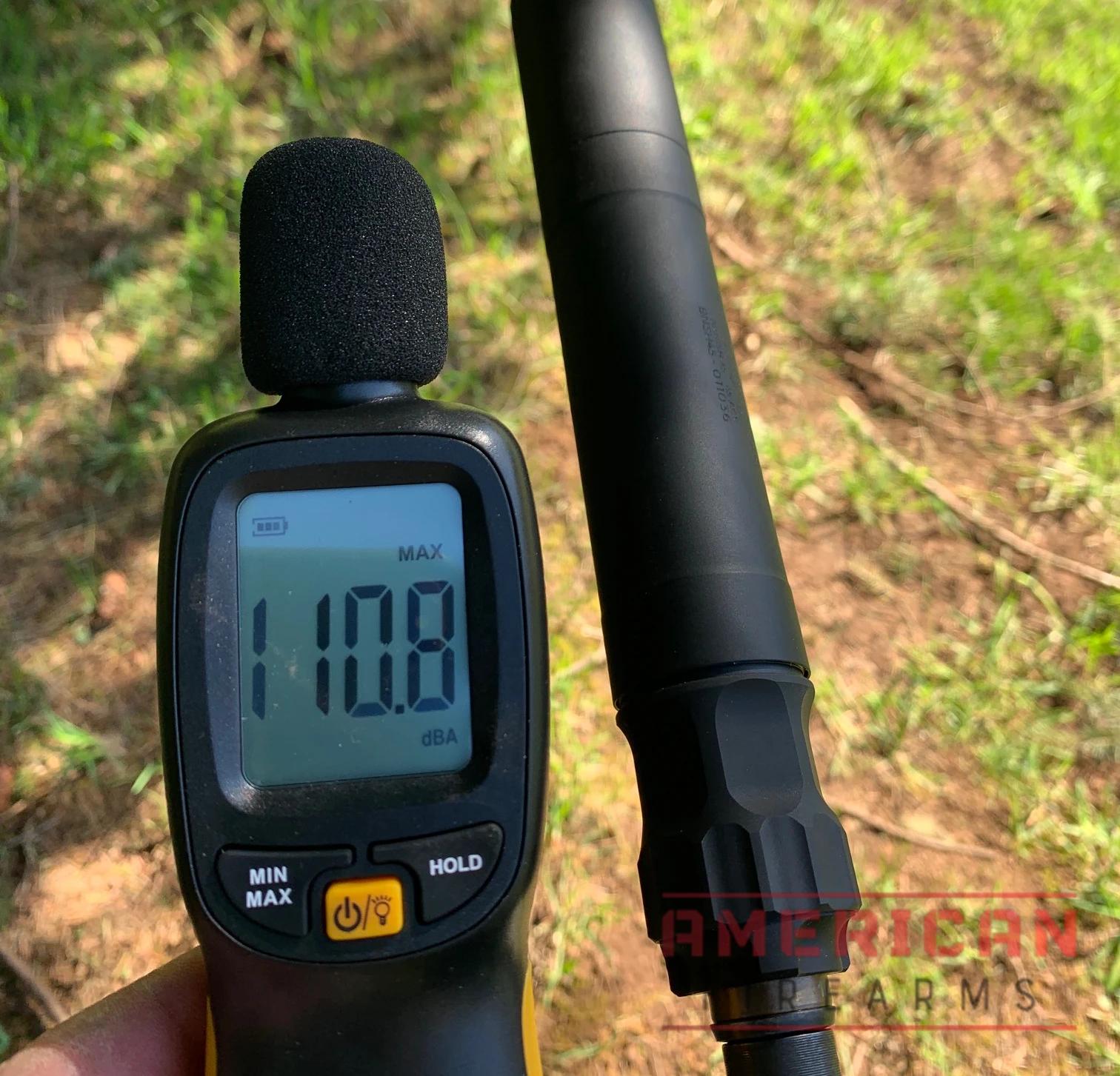
Accuracy
I tested Ammo Inc 115 gr FMJ rounds at about 70 yards and was consistently able to pull similar groups with and without the suppressor, mostly staying in the 2-3 MOA range. There was no real impact on accuracy, but no discernable improvement either.
Given that this is a multi-caliber suppressor compatible with both supersonic and subsonic ammunition, you can use the suppressor on calibers up to .45 ACP or smaller. It can handle everything from .45 ACP to .40 S&W, 10mm, .380 ACP, .22LR, and 300BLK (though for 300 BLK, it’s only rated for subsonic rounds).
We about 15 rounds of .22LR through it and, while not as effective as a dedicated .22LR can, it ran well enough to reduce the report comfortably.
Maintenance
While the maintenance on the Banish 45 is straightforward, it does require some familiarity with the instruction manual.
Their rimfire suppressors are all universal eight-baffle systems that use a single color & baffle orientation, but the Banish 45 uses a color-coded system that helps ensure the correct baffles all find their place and are correctly aligned.
It’s not overly complicated but definitely benefits from some time with the user manual and/or a helpful video.
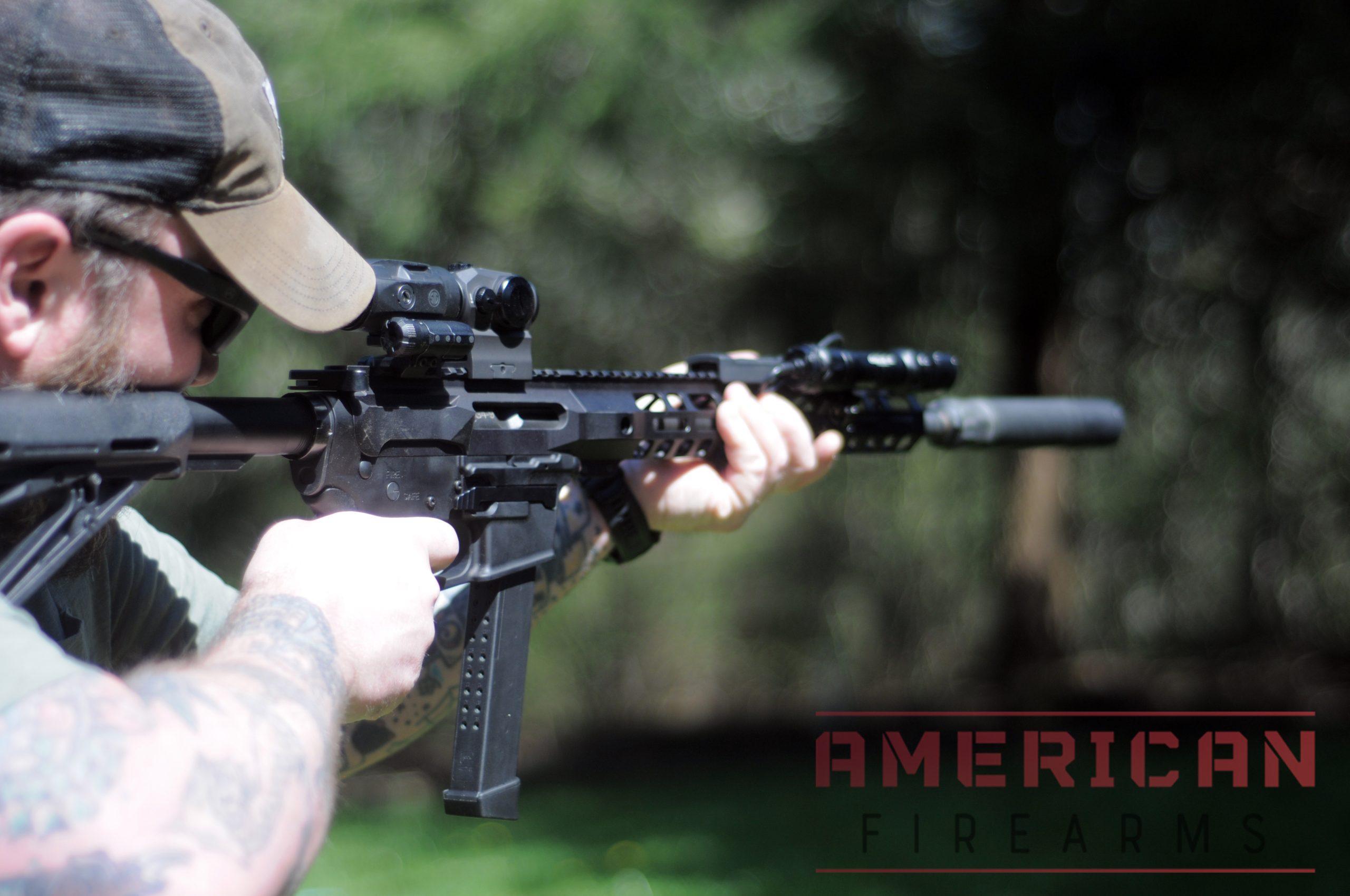
The downside? It’ll cost you about as much as three Taurus G3C pistols — such is the price of silence.
In short, it’s a great long-term purchase that is compatible with a wide range of firearm calibers, although it doesn’t cover the most common rifle caliber in the U.S., which is 5.56 NATO.
Pros
- Very easy to install and remove
- Short and lightweight
- Super durable
- Can be used for multiple calibers
Cons
- Not a big accuracy booster
- Not as much recoil reduction as other options
- Baffles need to be reassembled in a specific order
2. Budget Option: Ultima 9mm
Sound Reduction:
Accuracy:
Recoil Reduction:
Durability:
Here’s a compact and slightly less expensive 9mm suppressor. The Ultima 9mm Suppressor is a good choice for budget-minded shooters who still want something that can deliver significant suppression for typical 9mm pistols.
It’s a versatile model, using a patented “Recoil Attenuation Device mount (R.A.D.),” optimizing the Ultima for use with semi-auto pistols.
You’ll be able to quickly and easily adjust how the suppressor rotates onto your pistol, and you can also rotate the silencer to better suit your sight picture depending on how high the weapon’s sights sit on your gun.
This ensures that you won’t have to work with an obstructed sight under any circumstances.
The 1.375″ diameter suppressor comes with a cone baffle stack that can easily be removed for maintenance without needing tons of tools. The baffle helps your ammunition move out smoothly, improving accuracy for every shot.
The suppressor body is stainless steel and has a nitride finish that ensures long-term durability and corrosion resistance, paired with a stainless steel blast baffle. It is a little long at 9.5″, so be sure that this longer 9mm suppressor will fit with your firearm before finalizing a purchase.
Pros
- Can easily be rotated for a good sight picture
- Comes with a cone baffle to improve accuracy
- Baffle can easily be removed for maintenance
- Made with great materials and nitride finish
Cons
- Can be a bit long for some pistols
3. Best Recoil Reduction: Sig Sauer
Sound Reduction:
Accuracy :
Recoil Reduction:
Durability:
This 9mm suppressor is specifically designed for 9mm Luger pistols, and it’s made with a titanium tube that guarantees excellent durability without adding a ton of weight to your pistol. It also comes with stainless steel baffles for added performance.
The suppressor attaches with a barrel spacer set up that links securely to your weapon. Screwing in the suppressor only takes a couple of seconds, as does uninstallation if you want to swap it with a different barrel attachment.
This special setup process also means that it works well with any tilting barrel pistols – a special booster comes with the purchase.
Very little barrel movement with the SDR9 in place.
We also like that the suppressor can work to reduce the recoil you feel by a slight but noticeable amount. Again, this isn’t as powerful as something like a dedicated muzzle brake, but it’s a nice bonus. All in all, it’s a suppressor that works with a wide variety of pistols and that does a great job of suppressing noise while only weighing 12.6 ounces.
The downside is that you’ll have to clean and calibrate this suppressor relatively frequently. But compared to all the benefits, that’s not much of a flaw.
Pros
- Excellent titanium body
- Very easy to attach to a wide variety of guns
- Works with tilted barrel pistols
- Reduces recoil noticeably
Cons
- Needs lots of maintenance and calibration
4. Full Auto Option: Dead Air
Sound Reduction:
Accuracy:
Recoil Reduction:
Durability:
Sometimes you want a 9mm suppressor for a fully automatic weapon instead of a traditional, semi-auto application.
That’s what the Dead Air Wolf is all about. It was built for short barreled submachine guns of all kinds. It’s design offers a more modular suppressor that features a full-length orientation for longer weapons and a compact configuration for smaller pistols and handguns.
Solid performance from the DAA 9SD can
Regardless, it’s a durable piece of equipment that’s easy to clean and can withstand tons of fully automatic fire without decreasing in performance. It weighs either 7.5 or 14.7 ounces depending on its configuration; either way, that’s fairly lightweight for most folks. The compact orientation is also only 4.1 inches long.
It’s ultimately tough enough to be used with 300 blackout rounds. Just keep in mind that the barrel is a bit thick – even if it doesn’t weigh a whole lot, this might throw your balance off a bit. But it does ensure that the suppressor works wonders when it comes to reducing noise output.
Pros
- Can be used from pistols or submachine guns
- Both configurations are lightweight
- User serviceable
- Works with .300 Blackout rounds
Cons
- Might affect the balance of your weapon
- May require suppressor-height sights on pistols due to the diameter
5. Most Innovative: Maxim 9
Sound Reduction:
Accuracy:
Recoil Reduction:
Durability:
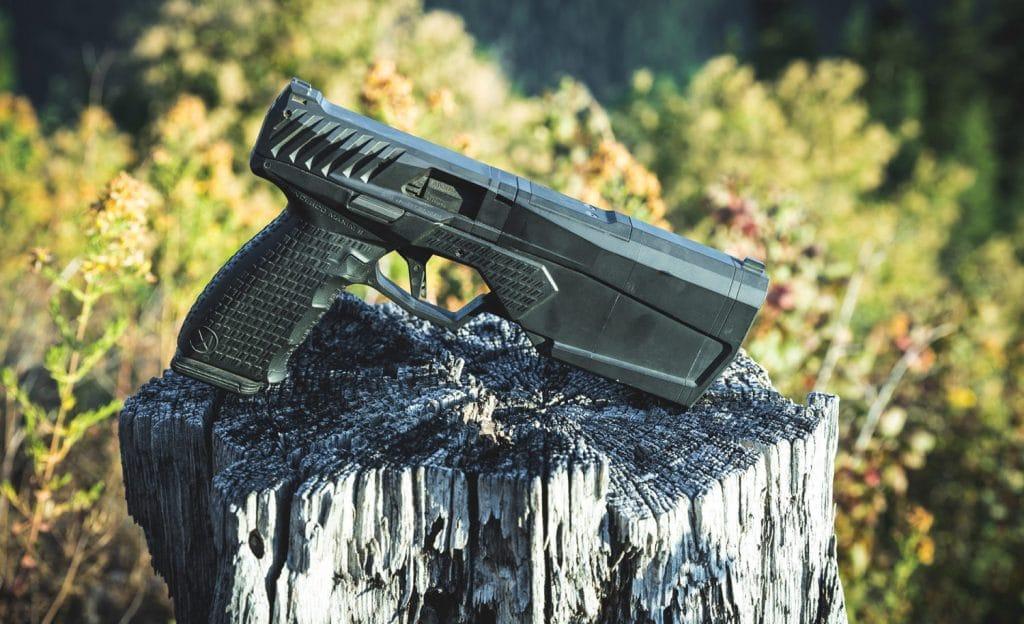
Alright, this isn’t a standalone 9mm suppressor.
Instead, it’s a 9mm pistol with “integral suppression”, meaning this suppressed pistol is always suppressed since the suppressor module is essentially built into the handgun’s frame.
Still, we think it’s a great choice if you want premium performance and are willing to put down some extra money to acquire it.

It’s a semi-automatic pistol that is shorter than almost any other traditional 9mm handgun when a suppressor is attached. It fires 147 gr, 9mm pistols at sounds of about 139 dB – talk about suppressing power!
It also uses Glock magazines, so you can combine the pistol with a variety of excellent accessories.
It’s a phenomenal pistol with barely any recoil and an ergonomic handle. Super and subsonic ammunition both work with this pistol and its integrated suppressor.
You can also use a modular control to extend the barrel a little bit for added accuracy, though this does increase the sound of the weapon.

Pros
- Suppressor is built into the handgun
- Very little recoil
- Excellent noise reduction
- Comfortable grip
- Easy to accessorize
Cons
- Very expensive
- Requires you to commit to a complete firearm
Why a 9mm Suppressor?
Aside from being generally awesome, I think there are two other good reasons to buy a suppressor for your 9mm firearm.
Noise Reduction
First and foremost, it reduces the noise signature of the firearm. While most of the time, the level of noise reduction won’t make it safe to shoot frequently without ear protection (unless you’re using subsonic ammo), it can mask the location of your shots.
Outside of the military, this also has applications for self-defense: if you need to shoot in the dark at an attacker, it’s better they don’t know where you are to respond with force.
Muzzle flash reduction
In the same vein, suppressors often reduce the muzzle flash to zero. This makes it much easier to shoot in the dark without either giving away your location or blinding yourself, which is vital in self-defense situations.
Recoil management
Finally, suppressors also tend to reduce the recoil by shifting the center of balance forward with the added weight at the end of the barrel along with the slower velocity.
While 9mm recoil is relatively mild in full-size pistols, it can be more pronounced in compact and subcompact handguns.
In cases like those, suppressing your 9mm can give you the advantage of having less felt recoil, which keeps your shots on target.
Types of 9mm Suppressors

While there’s a lot to know and learn about suppressors, you can break them down into two main types, and we’ll throw in a third one that’s a little bit different in terms of application.
Internal Baffle Suppressors
Many suppressors contain baffles: metal cones or other shapes that fit into a metal tube. These cones stack on top of one another to form a series of chambers with channels going in between them.

A suppressor with baffles offers significant flash and resound reduction by making the expanding gasses from the fired projectile circulate in the stainless steel baffle sections rather than going out of the front of the muzzle straight away.
As the gas circulates, it cools, allowing the unburnt powder to either burn or cool down.
These suppressors work reasonably well, and they can be re-used as long as you’re willing to clean them every so often as per manufacturer instructions.
Wipe Suppressors
Other suppressors use wipes. These wipes are rubber discs fitted into the end of a suppressor that may or may not also have baffles.
These replaceable discs are usually made from polypropylene or a similar material, and often look like an orange rubber disk at the business end of a suppressor, where gases have a lower pressure and temperature.
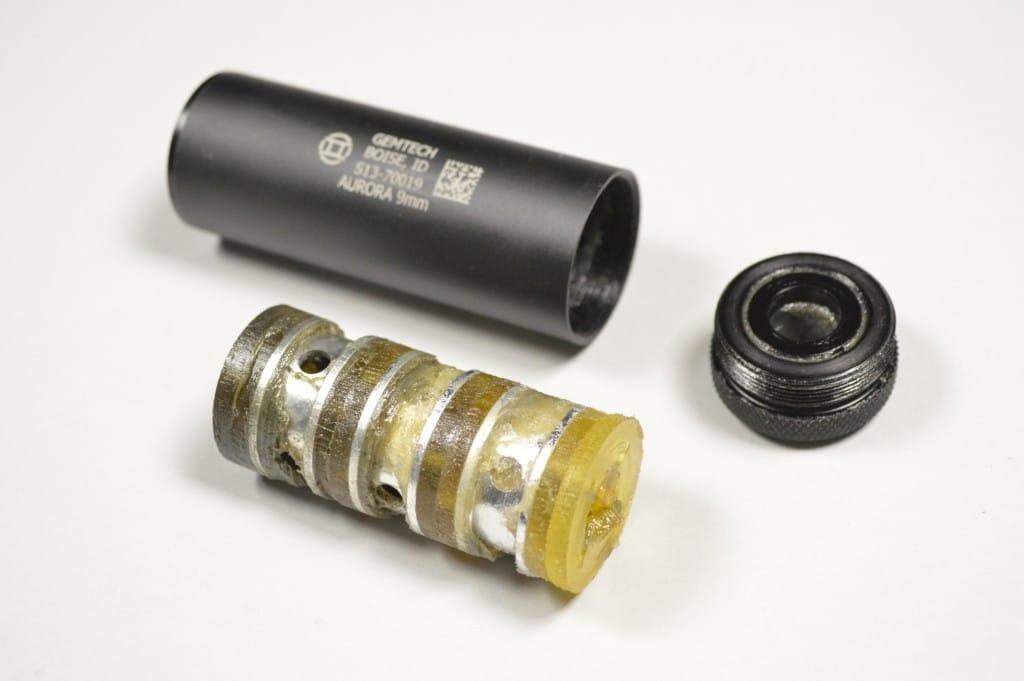
When a weapon is fired, the bullet punctures the wipe as it exits the suppressor.
The exit hole in the wipe will match the bullet’s diameter — sealing in spent propellant gases, which cool down inside the suppressor before exiting out through the hole made in the wipe by the exiting bullet.
This is an older suppressor technology that dates back to at least the Second World War, where they were used by the British OSS to great effect thanks to their impressive sound attenuation.
Wipes help reduce the “first round pop” — a phenomenon where the first shot from a silencer is louder than subsequent shots because of the burning oxygen inside the suppressor.
Suppressors with wipes are often supremely quiet for a single shot. After that, they tend to degrade in performance rather quickly, and you’ll need to replace the wipes after around 50 shots.
Wiped cans also require the shooter to use FMJ rounds, as hollow point ammo can expand on impact with a wipe, making them less than ideal for home defense.
While these are less common among civilian shooters, they are favored by certain government agencies with discreet budgets.
Both baffles and wipe suppressors usually screw onto the end of a barrel or attach by some manner of quick detach mount. Another type of suppressor does neither of those, though they will use baffles or wipes: integral suppressors.
Integral Suppressors
An integral suppressor is built into the gun — either from the factory or as a later modification, which prevents removal under normal circumstances.
This is the case with some pistol caliber carbines, rifle calibers, and some handguns, such as the (now defunct) Hudson H9, which is a fully suppressed pistol using a large array of baffles attached to the end of the barrel to achieve the desired sound reduction.
In addition to being highly effective, integral suppressors also have the benefit of cutting down on the amount of government paperwork you’re likely to encounter.
What to Look for in a Quality 9mm Suppressor
The different factors that distinguish 9mm suppressors from one another can impact how well they suit your firearm and its intended use. Let’s break them down one by one.
1. Decibel Reduction
When considering a 9mm suppressor, the primary factor I focus on is its degree of noise reduction. It’s somewhat subjective, so bear with us on this one.
While it’s possible to measure how much noise a suppressor reduces in decibels, equally important is how it changes the sound: a perceived quieter sound may not align with what a decibel meter actually measures.
I recommend weighing dB reduction claims against some well-recorded video reviews before making any decision about buying a suppressor.
2. Baffles vs. Wipes
Secondly, consider the type of suppressor you want or need. Generally speaking, you’ll be buying a suppressor that uses baffles, not wipes.
Some suppressor models still use wipes, but many of those are recreations or are surviving examples of historical suppressors from several decades ago.
While wipes are highly effective, their need for frequent replacement makes them less popular than baffle-based suppressors.
Next, consider attachment systems. For instance, if your barrel has a specific thread pitch, it only makes sense to buy a suppressor compatible with that threading.
Otherwise, you’ll end up with an adapter or worst case stuck trying to figure out how to make your gun work with your suppressor.
That’s clearly backward; it makes more sense to start with the gun or attachment system you already have and pick up a suppressor that will work without requiring additional adapters or a specific barrel threading.
3. Material
What kind of material? Metal, duh.
Obviously, the material construction of a 9mm suppressor matters a lot. Practically all of them will be made of some type of steel, usually stainless, titanium, or something similar.

You can also find many suppressors bolstered by durable polymers that can either reinforce the steel for added stability, increase noise reduction, or minimize heat transfer even further.
Hardier and lighter materials are almost always better – but they tend to increase costs. The lighter the suppressor, the less it affects your weapon’s balance, and the more accurate you will be with it attached.
4. Recoil Reduction
Some of the best suppressors can also help balance the recoil of your weapon. Keep in mind that this is a side effect, not the focus of the suppressor.
You shouldn’t expect it a suppressor to reduce your recoil in the same way that a muzzle brake often can. Still, suppressors that can add a little bit of extra stability to your weapon are always great choices.
5. Compatibility
Ensure that a given 9mm suppressor fits with your weapon and is rated for the shooting you do.
Some suppressors are only designed to be used with certain 9mm pistols, while others are suitable for compact and full-size handguns or even full-auto firing.
Still, more suppressors can work with longer rifles chambered for 9mm ammunition, like certain AR-15 builds cobbled together by hobbyists.
6. Attachment Mechanism
Direct Thread
Certain suppressors are really easy to screw onto the end of your gun via direct threading — such as a rifle in 5.56 NATO caliber threaded for 1/2-28.
A suppressor threaded in 1/2-28 simply screws onto the end of the barrel or flash hider. It’s the cheapest option, requiring nothing other than the barrel and suppressor, which means it’s also the lightest and least expensive route to quieting down your rifle (or multiple common-caliber rifles).
Direct threaded suppressors can loosen over time. Ensure they are tightened to specifications before shooting to prevent potential malfunctions.
Quick Disconnect
Quick Disconnect (QD) will often require a dedicated adaptor but it makes attaching and disconnecting a suppressor incredibly easy. They’re also convenient – in that you can mount an adapter to a muzzle device on multiple rifles and swap your suppressor all day long.
QD options tend to be more expensive, as you’ll need an adapter for every gun you run, plus they add weight.
7. Weight
Lastly, when considering a suppressor, it’s crucial to think about its weight.
With a suppressor, any added weight is primarily at the front of the gun. A heavy suppressor can make a gun feel cumbersome and difficult to use over extended periods.
On the other hand, larger and heavier suppressors have more internal volume, making them more effective at sound suppression.
Ideally, you’ll find a balance that’s both light enough to use and has enough internal volume to be effective.
Pricing and Value
Fair warning, suppressors are not cheap, and it’s likely you’ll spend more on the suppressor than you do on the firearm itself.
- $500-$1,000. At about $500, you’ll find basic suppressors that thread onto your firearm. This is effectively the entry point in the market, and these suppressors will have your standard designs, made primarily of steel with some titanium components if you can find a good deal.
- Over $1,000. For over $1,000, you’re in the sweet spot — covering all the basic features/materials but also including suppressors that experiment with new and exciting materials like reinforced polymers. There are also modular models in this price range that can be reassembled into different sizes to change the performance to your needs or better align with your firearm’s dimensions. This price range is where you’ll find a lot of the best suppressors.
Also, it’s worth mentioning that no matter what suppressor you get, you’ll also have to pay a $200 tax stamp to the ATF and wait for them to approve it before you can take your suppressor home from your firearms dealer. This adds substantial cost to the suppressor alone, which is one of the main reasons that suppressors are considerably more expensive than firearms alone.
FAQs
Do I need a special license to buy a suppressor?
Can I take my suppressor to other states?
What's the difference between a silencer and a suppressor?
Can I use one suppressor on multiple calibers?
Do I need subsonic ammo for my suppressor to work?
Will a suppressor affect my pistol's accuracy?
How often do I need to clean my suppressor?
Conclusion
In conclusion, all of these 9mm suppressors are excellent choices. The Silencer Central Banish 45 Silencer is a good all-around choice for most users thanks to its asking price and excellent design choices.
We believe that any of these suppressors will effectively reduce the noise output of even the loudest 9mm pistols or submachine guns, aiding in successful hunts or tactical operations.
Reviewed
June 10, 2025 — We’ve reorganized the article structure for better flow and added comprehensive sections on suppressor basics, categorized recommendations, and an expanded FAQ covering legal requirements and technical questions.
Sign up for our newsletter
Get discounts from top brands and our latest reviews!

